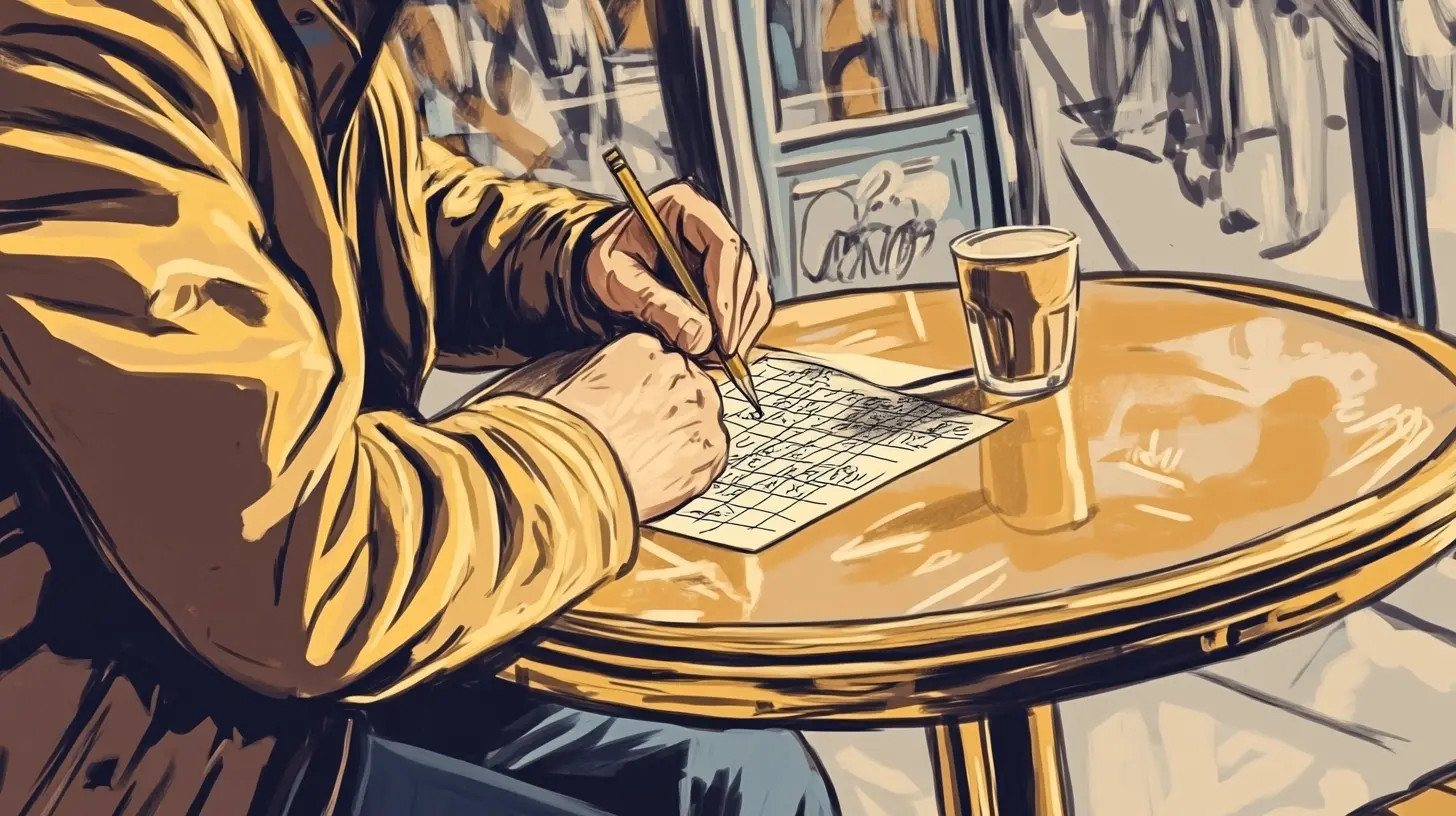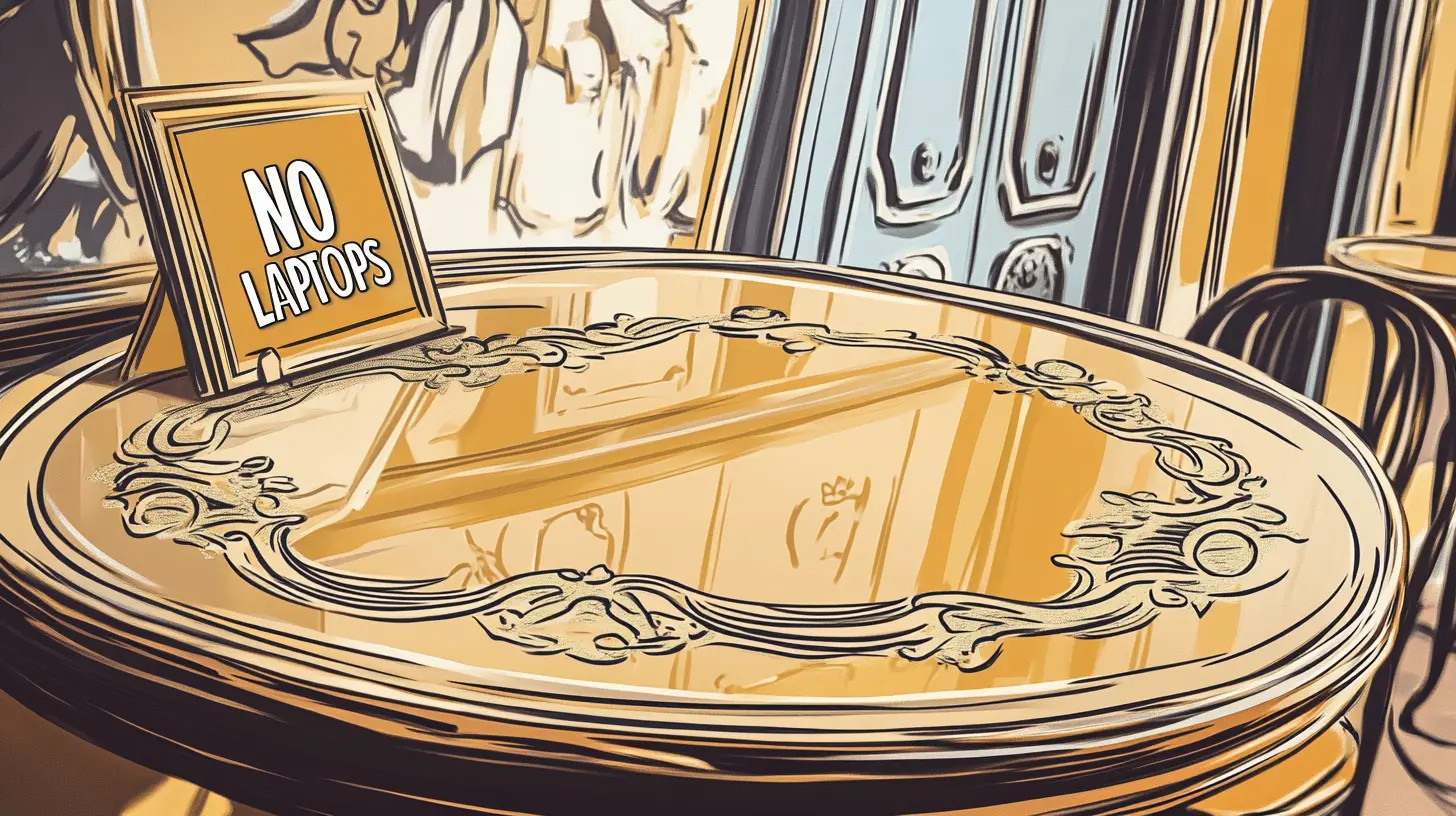The allure of a café window offers a unique perspective – a lens that magnifies the subtle nuances of human behavior. Within these cozy confines, patrons engage in rituals, from the hurried consumption of espresso to the relaxed savoring of wine. This fall, “Encounter Culture” delves into these everyday transactions, exploring how our choices, from morning coffee to afternoon tea, reflect our values, aspirations, and the prevailing zeitgeist.
Each Thursday, a man in his forties seeks refuge in our café. Armed with only a crossword puzzle, he chooses the most secluded table, orders his usual – a chicken sandwich and sparkling water – and immerses himself in the analog world of words and clues.
Observing him, I can’t help but question: Is this “Puzzle Man” genuinely disconnected, or is his offline demeanor a carefully crafted performance? In an era where “no laptops” signs are practically café décor, are we deterring the truly Terminally Online, or simply attracting a crowd adept at transforming their offline moments into online content? Are these individuals genuinely embracing disconnection, or are they just masters of curating their “digital detox” for their next post?
Oh, apologies, is that your check you need? Coming right up!
 Man doing crossword puzzle in cafe
Man doing crossword puzzle in cafe
Nearby, a group of colleagues from a local pop-up are engrossed in conversation, punctuated by sips of wine and cigarette smoke. Their camaraderie is palpable, so much so that the prospect of leaving their table seems almost painful.
The Paradox of Modern Connection: Craving Offline in an Online World
We’re a paradoxical society. We gorge ourselves on content while quietly longing for freedom from the very devices we can't seem to put down.
I find myself captivated by these café-goers, by their unhurried meals and the lingering moments that follow. It’s particularly striking to observe those my age, individuals who likely amassed impressive Instagram followings in their early teens, now engaging in face-to-face interactions with a seeming ease, resisting the urge to constantly check their phones or rush off the moment their plates are cleared.
However, this idyllic scene feels increasingly threatened. Caught in the throes of my own technology dependence, I recognize myself as part of the problem. During conversational pauses, my hand instinctively reaches for my phone. At home, I’ve become a virtuoso of media multitasking: watching videos of wombats frolicking in water on my iPad while “Desperate Housewives” murmurs in the background on television – because, apparently, a single screen of distraction is simply insufficient.
We exist in a state of paradox. We are perpetually online, consuming endless streams of content, yet simultaneously yearning for liberation from the very devices that hold us captive. A growing number are questioning this relentless connectivity, longing for moments untouched by the incessant ping of notifications and the addictive pull of infinite scrolling.
The Rise of the “Offline Aesthetic” and Performative Disconnection
This yearning has fueled the rise of an “offline aesthetic,” a minimalist movement that champions presence and evokes a simpler, pre-digital era. It’s a time when people weren’t just pretending to be like the man with his crossword – they were him. They spent hours outside cafes, lost in laughter, books, or their own thoughts, entirely screen-free. Coffee shops are now designed with this in mind: adorned with lush greenery and vintage photographs, furnished with simple wooden pieces surrounding communal tables and inviting couches. These aren’t merely decorative choices; they are storytelling devices, carefully curated to capture our attention and offer a deliberate counterpoint to our hyper-digital, performative, and attention-driven world.
 Cafe with "no laptops" sign
Cafe with "no laptops" sign
Capitalism, they say, has a solution for everything. Device-free zones are presented as just such a remedy. What better escape for a weary soul than a charming café, offering soothing music, cool air, and the promise of a laptop-free environment?
Yet, even these sanctuaries are not immune to the pervasive influence of online culture. People now deliberately choose outdoor seating at these once-digital-detox cafes, not to disconnect, but to photograph the “no laptops allowed” sign and share it online.
As the concept of “being offline” gains traction as a trend, these spaces designed for respite are increasingly vulnerable to the very social media dominance they seek to escape. The desire for authentic, genuine experiences is now colliding head-on with the compulsion for virtual validation.
Authenticity in the Age of Social Media: A Contradiction?
A recent satirical TikTok video perfectly illustrates this tension. It depicts a group of young men “reading” outside a classic New York café – “quotes” around reading because, upon closer inspection, some of their books are hilariously upside down. My own TikTok feed is flooded with videos of women enjoying “wholesome” meals with friends, often in – you guessed it – coffee shops. But with their phones strategically placed nearby, their digital presence looming, how truly wholesome are these moments? While the intentions behind these posts might be positive – promoting a certain lifestyle or creating engaging content – social media has undeniably distorted our understanding of authentic living.
 Ornate design element
Ornate design element
Just last week, while journaling at the café bar after my shift, I witnessed a couple meticulously staging photos of each other. I became acutely aware of how I might inadvertently appear in their carefully constructed shot. It struck me that even those who actively avoid social media are not immune to the pervasive reach of those deeply immersed in their digital lives.
The Commodification of Authenticity and the Search for Genuine Connection
When authenticity becomes a trend, is it still authentic?
During a recent trip to CDMX, a popular travel destination, I was disheartened by the overwhelming crowds and chaos at renowned attractions, places celebrated for their beauty and authenticity. The sheer volume of tourists, driven in part by social media hype, made it difficult to appreciate the very essence of these locations. While social media excels at highlighting hidden gems and new experiences, it also risks overwhelming and commercializing these spaces.
Consider Michel Foucault’s concept of “aesthetics of existence,” where individuals consciously craft themselves as living works of art, acutely aware of their self-presentation. Or Pete Wells, the New York Times journalist, who coined “camera cuisine,” describing dishes designed not just for taste but for visual appeal, catering to our documentation-obsessed culture. This shift has profoundly impacted restaurant menus, just as the “authenticity trend” may reshape the very spaces we inhabit and the products brands offer.
Certain brands have capitalized on this anti-screenager sentiment, leveraging it to enhance their social capital. Soho House, for example, offers community spaces that blend aesthetics, social media buzz, and exclusivity. The Light Phone, a minimalist device limited to calls, texts, and music, explicitly rejects social media connectivity.
However, beneath the initial appeal of this return to simplicity lies a potentially unsettling reality. When authenticity itself becomes a trend, can it truly remain authentic? The genuine pursuit of connection and meaningful experiences risks becoming commodified and diluted in our increasingly digital society. As we navigate this paradox, the question remains: can we ever truly disconnect in a world determined to keep us terminally online?
